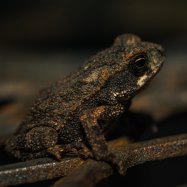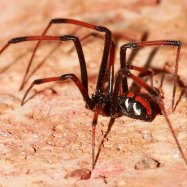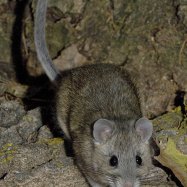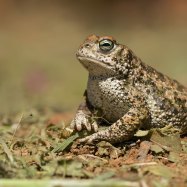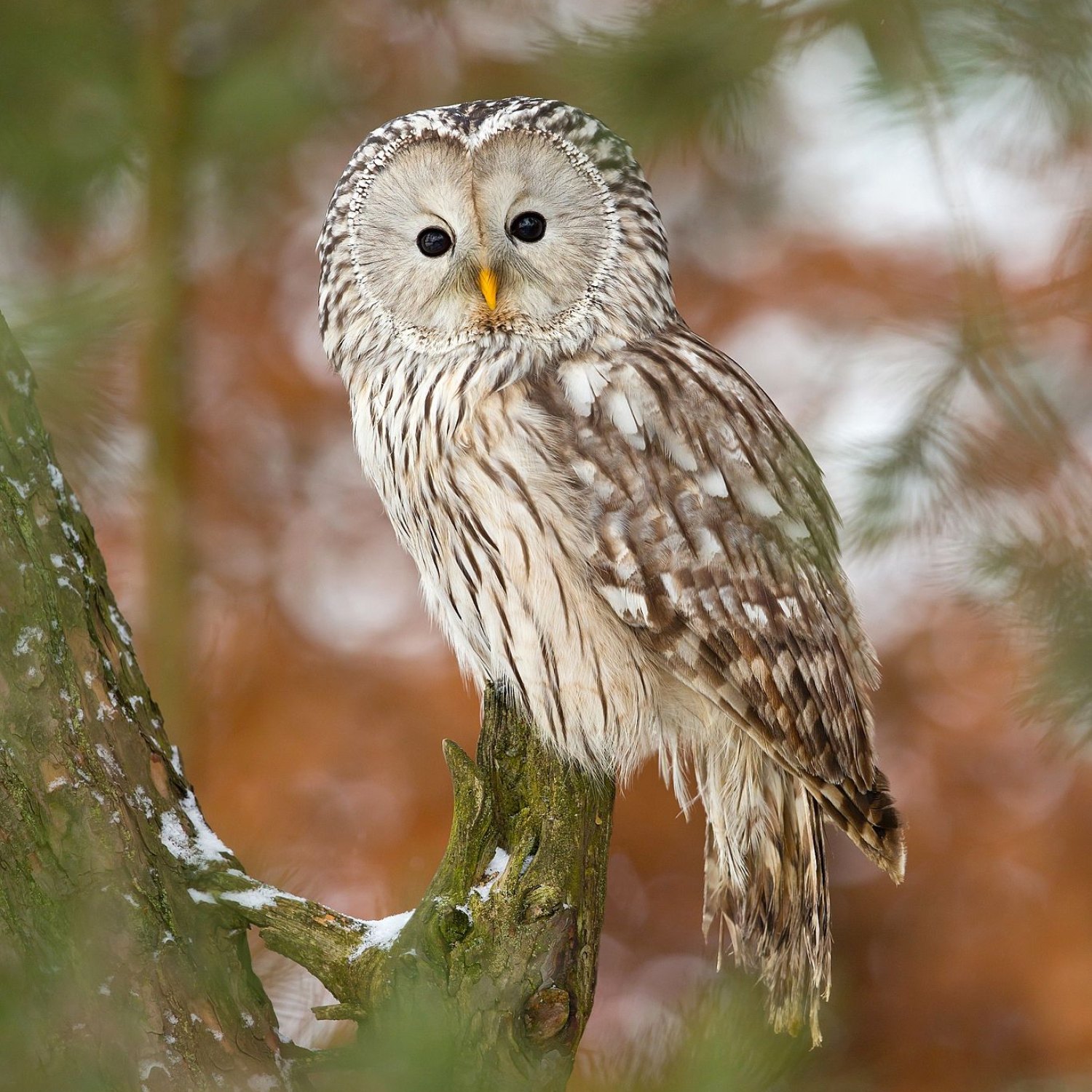
Ural Owl
56-66 cm (22-26 inches)
The Ural Owl is a mesmerizing creature found in the Taiga and boreal forests of Europe, Asia, and Northern Africa. With a length of 56-66cm, it belongs to the Strigidae family and has a medium to large-sized body. Its unique appearance and call make it a popular sight for birdwatchers and nature lovers.
Animal Details Summary:
Common Name: Ural Owl
Kingdom: Animalia
Habitat: Forests
The Majestic Ural Owl: A Hunter of the Northern Forests
The Ural owl, scientific name Strix uralensis, also known as the ural owl, is a magnificent bird of prey that has captivated people for centuries with its impressive size and hunting prowess. A resident of the northern forests of Europe and Asia, this bird belongs to the animal kingdom, phylum chordata, and class aves, making it a close relative of other owls, such as the snowy owl and great horned owl. However, what sets the Ural owl apart is its unique features and fascinating behavior, making it a subject of admiration and study by many researchers and bird enthusiasts.The Habitat and Distribution of the Ural Owl
The Ural owl is a forest dweller, preferring to make its home in dense, coniferous woodlands Ural Owl. These habitats provide the perfect environment for the owl to hunt and nest, with their abundance of prey and protection from predators. As its name suggests, the Ural owl can be found in the Ural Mountains, stretching from Russia to Kazakhstan, but it has also extended its reaches to other parts of northern Europe and Asia, such as Scandinavia, China, and Japan. These birds have adapted well to the diverse climates of these regions, making them a common sight in the taiga and boreal forests.
Appearance and Physical Features
The Ural owl is a medium to large-sized owl, with a body shape that is specifically designed for hunting. It measures about 56-66 cm (22-26 inches) in length, with a wingspan of up to 133 cm (52 inches), making it one of the largest species of owls in the world. In addition to its impressive size, the Ural owl has striking reddish-brown or dark grey-brown coloration, with a prominent V-shaped facial disk, giving it a distinct and regal appearance. Its eyes are large and yellow, providing excellent vision and adding to its majestic aura.
The Feeding Behavior of the Ural Owl
The Ural owl is a carnivorous bird that is known for its efficient hunting skills. These birds primarily feed on small mammals, such as voles, hares, and squirrels, but they are also known to prey on birds, insects, and even fish Umbrellabird. These birds are adept hunters, using their sharp talons and powerful beaks to catch and kill their prey. They are also known for their silent flight, allowing them to surprise their prey with a swift and precise attack. The Ural owl's robust digestive system also enables them to digest the bones and fur of their prey, providing them with essential nutrients.
The Interesting Behavior of the Ural Owl
Apart from their hunting techniques, the Ural owl also has some unique behaviors that make them intriguing creatures. For instance, they are solitary birds, preferring to spend most of their time alone or with their breeding partner. During the breeding season, these birds perform captivating courtship displays, where they fly around their mates, calling out and exchanging food, strengthening their bond. The Ural owl is also known for its occasional migration, mainly during the harsh winter months when food is scarce, making them more elusive to researchers and bird watchers.
The Conservation of the Ural Owl
Like many other animals, the Ural owl is facing threats to its survival. The destruction of its natural habitat, mainly due to deforestation, is the primary concern for these birds. The taiga and boreal forests are vital not only for the Ural owl but also for many other species that call these places their home. Additionally, the use of pesticides and poisons in these areas also poses a threat to the Ural owl as it affects their prey and ultimately, their survival. The International Union for Conservation of Nature (IUCN) has listed the Ural owl as least concern, but with the increasing destruction of their habitat and other factors, they may soon be in need of more focused conservation efforts.
Conclusion
In conclusion, the Ural owl is a remarkable bird that has captured the imagination of many people throughout history. With its impressive size, majestic appearance, and unique behaviors, it is no surprise that it continues to be a subject of fascination and research. However, it is essential to understand the importance of preserving their natural habitat and protecting them from potential threats to ensure that future generations can also marvel at the beauty of these magnificent creatures. The Ural owl is truly a hunter of the northern forests, and we must do our part to ensure that they thrive in their wild home.

Ural Owl
Animal Details Ural Owl - Scientific Name: Strix uralensis
- Category: Animals U
- Scientific Name: Strix uralensis
- Common Name: Ural Owl
- Kingdom: Animalia
- Phylum: Chordata
- Class: Aves
- Order: Strigiformes
- Family: Strigidae
- Habitat: Forests
- Feeding Method: Carnivorous
- Geographical Distribution: Northern Europe and parts of Asia
- Country of Origin: Russia
- Location: Taiga and boreal forests
- Animal Coloration: Reddish-brown or dark grey-brown
- Body Shape: Medium to large-sized owl
- Length: 56-66 cm (22-26 inches)
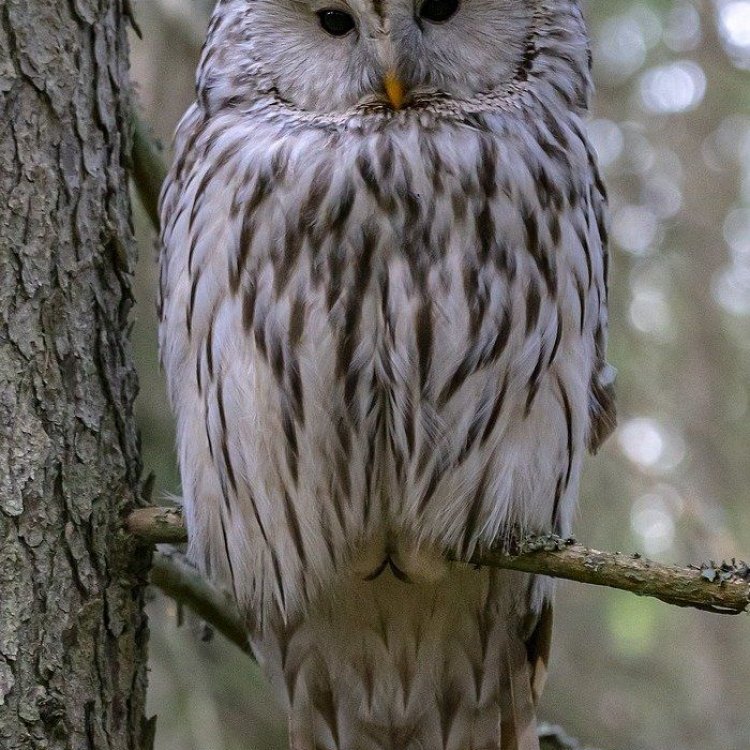
Ural Owl
- Adult Size: Medium to large
- Average Lifespan: 10-15 years
- Reproduction: Monogamous
- Reproductive Behavior: Nest in tree cavities
- Sound or Call: Distinctive hooting call
- Migration Pattern: Non-migratory
- Social Groups: Solitary or in pairs
- Behavior: Nocturnal
- Threats: Habitat loss, persecution, and collisions with vehicles
- Conservation Status: Least Concern
- Impact on Ecosystem: Controls population of small mammals
- Human Use: A popular species for birdwatching
- Distinctive Features: Prominent facial disk and ear tufts
- Interesting Facts: The Ural Owl is the only owl species found in the Ural Mountains
- Predator: Great Horned Owls, Eurasian Eagle Owls, and Goshawks
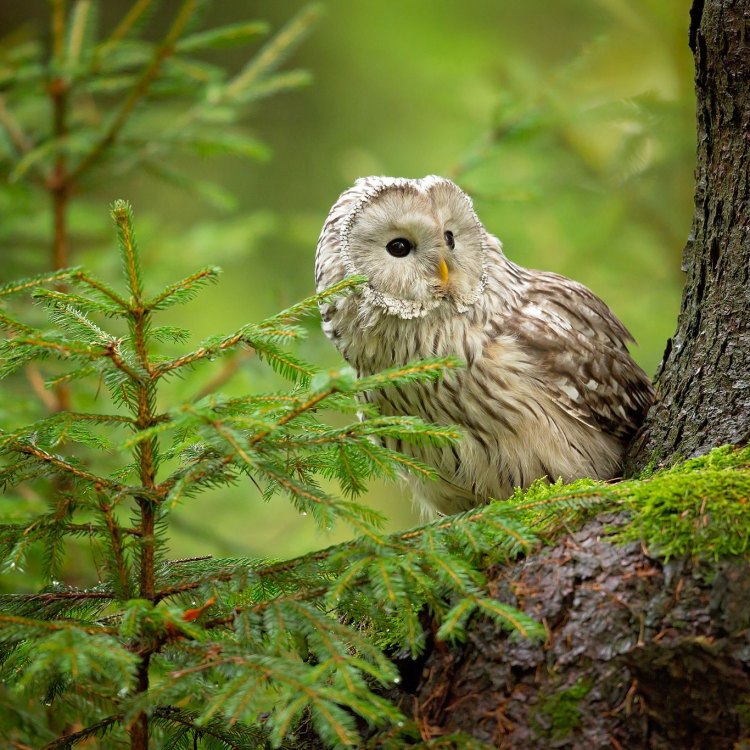
Strix uralensis
The Fascinating World of the Ural Owl: A Unique and Mysterious Species
The world is full of unique and fascinating creatures, each with its own distinctive features and behaviors. One such creature that stands out is the Ural Owl. This elusive bird inhabits the dense forests of Europe and Asia and is known for its distinctive call and impressive appearance. In this article, we will delve into the world of the Ural Owl, exploring its unique characteristics, behaviors, and impact on the ecosystem PeaceOfAnimals.Com.The Basics: Size, Lifespan, and Reproduction
The Ural Owl is a medium to large-sized owl, with a wingspan of up to 50 inches and standing up to 24 inches tall. As with many bird species, the female Ural Owl is slightly larger than the male. On average, this species has a lifespan of 10-15 years in the wild, although some have been known to live up to 25 years in captivity.One of the most unique aspects of the Ural Owl's reproductive behavior is its monogamous nature. These birds form strong pair bonds and remain together for life. During the breeding season, which typically occurs from April to July, Ural Owls will nest in tree cavities, using abandoned nests or hollowed-out tree trunks. The female will lay 3-6 eggs and will incubate them for 27-29 days, while the male provides food for the family.
Solitary and Nocturnal: The Behavioral Patterns of the Ural Owl
Unlike some owl species, the Ural Owl is a solitary bird. While they may form strong pair bonds during the breeding season, they typically prefer to hunt and roost alone Uguisu. These birds are also strictly nocturnal, meaning they are most active at night, making them rarely seen by humans.One of the most distinctive traits of the Ural Owl is its hooting call. This call is distinctive and can be heard echoing through the dense forests in which these birds reside. The male and female Ural Owl will often engage in duets, with the male's call being deeper and more frequent than the female's. These calls are used to communicate with their mate, defend territories, and attract potential mates.
The Ural Owl's Role in the Ecosystem
The Ural Owl plays an essential role in the ecosystem as a predator. These birds feed primarily on small mammals, including voles, shrews, and mice. As they are strictly nocturnal, they are often the top predator in their range during the night, helping to control the population of their prey.In areas where the Ural Owl population is high, their presence can have a significant impact on the ecosystem, as they help to maintain a healthy balance in the food chain. However, their population can also be affected by habitat loss, persecution, and collisions with vehicles, which threaten their overall conservation status.
A Popular Species for Birdwatching
Despite being elusive and mostly active at night, the Ural Owl is a popular species for birdwatchers. Its distinctive hooting call and impressive appearance make it a highly sought-after sighting for enthusiasts. In parts of Europe and Asia, where the Ural Owl is more abundant, specialized birdwatching tours have been set up to give people the opportunity to see these birds in their natural habitat.Distinctive Features: Prominent Facial Disk and Ear Tufts
The Ural Owl is easily recognizable due to its unique and impressive appearance. It has a well-defined facial disk, which acts like a satellite dish, capturing and directing sound towards its ears. This feature is particularly useful for these birds, as they rely heavily on their hearing when hunting at night.Another distinctive feature of the Ural Owl is its prominent ear tufts. These tufts are not actually ears; instead, they are feather extensions that help to camouflage the birds and make them appear larger to potential predators. The ear tufts also play a role in communication, as they can be raised or lowered depending on the bird's mood or level of alertness.
The Ural Owl: The Only Owl Species in the Ural Mountains
One of the most interesting facts about the Ural Owl is that it is the only owl species found in the Ural Mountains. This mountain range stretches over 1,500 miles, forming a natural border between Europe and Asia. It is located far from other owl species' typical range, making the Ural Owl a unique and mysterious bird.Predators of the Ural Owl
While the Ural Owl is a top predator in its range, it also has predators of its own. The most significant threats to these birds come from other owl species, such as the Great Horned Owl and Eurasian Eagle Owl. These larger and more powerful owls will often prey on young Ural Owls or compete for territory with adult birds.In addition to other owl species, the Ural Owl is also vulnerable to predators such as Goshawks, which are swift and agile raptors. Human activity, such as habitat destruction and collisions with vehicles, also contributes to the Ural Owl's decline in certain areas.
In Conclusion
The Ural Owl may be a lesser-known species compared to other owl species, but its unique characteristics and behaviors make it a truly fascinating bird. From its monogamous reproduction and solitary nature to its distinctive hooting call and impressive appearance, the Ural Owl has captivated the minds of bird enthusiasts for centuries.As with many other species, the Ural Owl is facing threats to its population. Conservation efforts are crucial in protecting these birds and ensuring their place in the ecosystem as a top predator. By learning more about the Ural Owl and spreading awareness about its conservation needs, we can help ensure that future generations can continue to marvel at this mysterious and remarkable creature. So, let us appreciate and protect the unique and fascinating world of the Ural Owl.
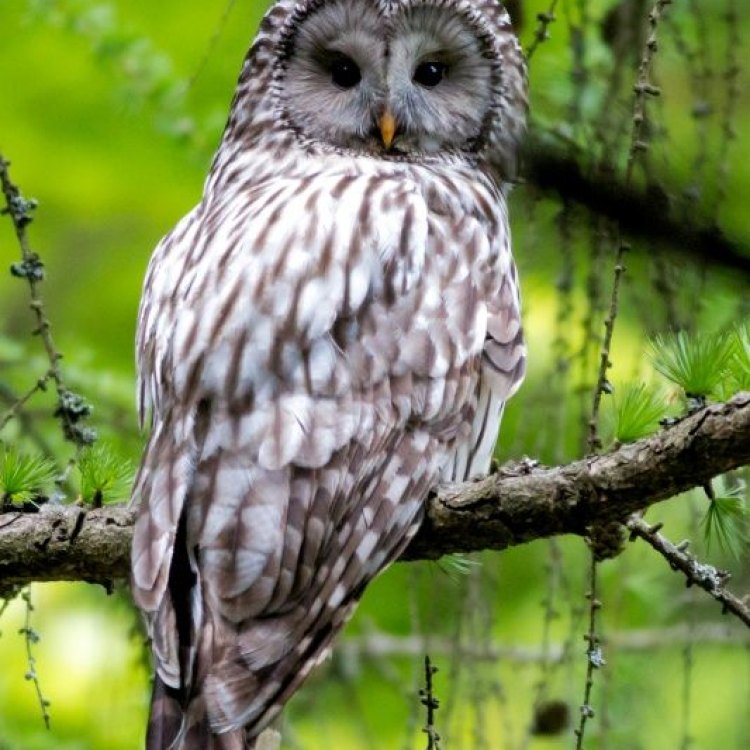
The Majestic Ural Owl: A Hunter of the Northern Forests
Disclaimer: The content provided is for informational purposes only. We cannot guarantee the accuracy of the information on this page 100%. All information provided here may change without prior notice.




